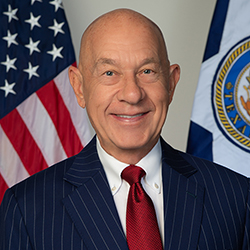Not really a surprise, unfortunately.
Asked amid a flurry of design changes and shifts in street policy whether he was abandoning Houston’s goal of eliminating vehicle deaths by 2030, Mayor John Whitmire in February 2024 said a goal for the future wasn’t what the city needed.
“My commitment to ending the loss of lives starts right now,” the mayor said at the time. “Not years from now.”
Less than a year later, 2024 ended as the deadliest year for drivers, passengers and pedestrians in the city’s history. At least 344 people were killed on Houston area streets last year, a record high after two years of declines.
A review of crash data maintained by the Texas Department of Transportation, using crash reports filed by police, shows:
- Houston’s increase in road deaths comes as unincorporated Harris County, the metro region outside the city and the state as a whole reported declines in deaths for 2024, compared to 2023.
- More than one-third of Houston road deaths, 118, were pedestrians, with more than half of those fatalities occurring on roads with a speed limit of 45 mph or higher. More pedestrians, 44, died on Houston interstates than drivers, 43.
- Of the 344 fatalities, 191 – or 56% of all deaths, were Black or Hispanic men.
- Cycling fatalities dropped, with Houston logging the fewest since 2017.
As deaths increased, however, the number of serious injuries declined. When the two are combined, the total number of deaths and serious injuries in the city declined slightly, compared to the past three years. The total number of crashes also dropped, by a larger percentage than serious and fatal crashes.
Advocates for safer streets and investment in sidewalks and other amenities called the jump in deaths mournful, but also predictable.
“These aren’t the results you might expect from a mayor who is supposedly focused on public safety,” said Joe Cutrufo, executive director of BikeHouston. “But when you consider how Mayor Whitmire spent his first year in office, killing projects designed to save lives and slamming the previous administration’s efforts toward eliminating traffic deaths, this isn’t surprising at all.”
After Whitmire’s office initially agreed to an interview, his spokesperson canceled, citing his busy schedule. The Houston Chronicle sent questions on Jan. 16 to his office, related to the increase in deaths and efforts to improve road safety. As of Jan. 31, his office had not responded.
[…]
Critics of Whitmire’s focus on enforcement – and his canceling or changing of many planned street redesigns – said it shows how the gap in street safety remains.
“While enforcement, such as targeting DWIs, plays an important role, it cannot stand alone,” said Peter Eccles, director of policy and planning for the advocacy group LINK Houston. “Infrastructure improvements – like 10- or 11-foot lanes proven to reduce speeding and crashes – are critical to protecting lives 24-7. Safe street design is a lasting safeguard that Houston urgently needs to embrace.”
Sometimes, Whitmire’s efforts also have been in places not plagued by crashes. Prior to the December enforcement initiative along Washington, crashes along the street were not significantly on the rise. Crashes were actually down compared to two years ago, though the severity of crashes had increased because of three in August that caused serious injuries – including one death. That fatality was the first on Washington since 2022 and the fourth over the past decade.
Dozens of other local streets have far higher numbers of fatal crashes. Bellaire Boulevard, for example, had three pedestrian deaths in 2024 alone. Westheimer – the city’s longest road – had five pedestrian, one motorcyclist and four automobile deaths last year.
Although police have said traffic enforcement has increased citywide, partly through partnerships with other departments such as the Texas Highway Patrol, the city has not held special initiatives along Bellaire or Westheimer where crashes are common. Officials did, however, focus enforcement in January along Interstate 69 in southwest Houston that included local streets.
There’s a certain amount of noise in this kind of data – as the story notes, while there were fewer traffic deaths in Houston in 2023, the last year of Mayor Turner’s administration, the number of serious injuries was higher – and as such we won’t have a decent picture of how things are until we’re a few years in. But at a high level, focusing on road design changes that discourages excessive speed and prioritizes pedestrians and bicyclists tends to have a positive effect, and we’re doing less of that now. Enforcement has its place, and Lord knows we all see lunatics on the roads endangering us all every day (not that we see them get pulled over…), but it’s one piece of the puzzle. And it’s not doing enough.

